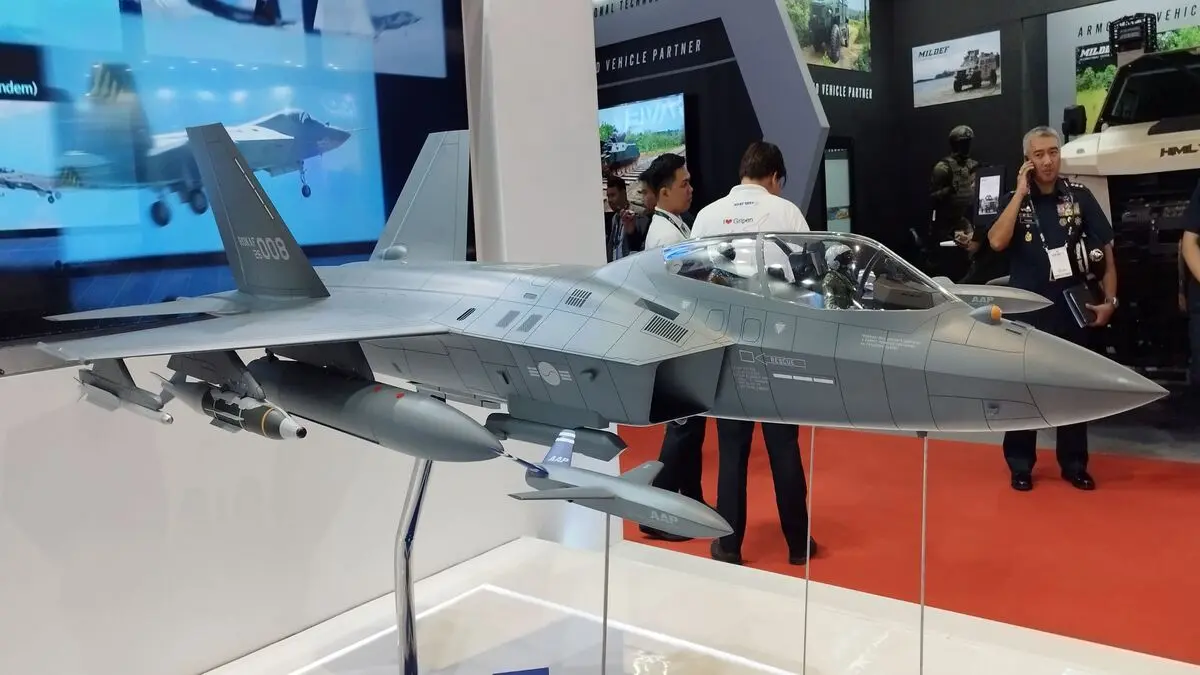“During the IndoDefense 2025 exhibition held in Jakarta, Indonesia and South Korea formally signed a Revised Project Agreement to continue the joint development of the KF‑21 Borame fighter jet. According to South Korea’s Defense Acquisition Program Administration (DAPA), the update reaffirms Indonesia’s financial commitment and strengthens bilateral cooperation on submarines, firepower and air defense systems, with a vision to enhance cooperation in Southeast Asia.
Financial reconstruction and production commitments
Indonesia initially agreed to a 20% share of the project cost – approximately ₩1.7 trillion (US$1.25 billion) – but fell behind in payments, leaving a backlog of more than ₩500 billion by 2020. In August 2024, South Korea Jakarta’s contribution was limited to 7.5%, about ₩600 billion (US$440 million), which the nation is now working on. Finalization processes by the local administration[^4]. The revised agreement ensures that Indonesia retains rights to up to 48 KF‑21 jets and maintains its production partnership through PT Dirgantara Indonesia (PTDI).
Strategic and industrial implications
The updated agreement represents a strategic pivot, revitalizing a key defense partnership even while facing underlying challenges. For Seoul, recalibrating Indonesia’s share paves the way for more stable cooperation and strengthens its ambitions to emerge as a global defense exporter. For Jakarta, the agreement maintains its share in the fighter jet program while promising continued participation in aerospace development and production.
However, this concession could limit Indonesia’s leverage. Critics worry it could set a precedent that could complicate future burden-sharing in multinational defense partnerships. Trust was already tested by a 2024 incident in which an Indonesian engineer was briefly detained for trying to smuggle technical documents related to the project. While both nations have publicly dismissed the incident as less ambitious, it highlights ongoing security concerns that will need to be addressed for deeper tech transfer.
Despite these risks, the outlook is positive. With final payments in place, both nations could resume flight testing, local assembly, and serial production. Indonesia is expected to receive 48 jets under the revised delivery schedule, and PTDI plans to expand its role in maintenance and infrastructure. The broader scope of the agreement — expanding to include submarine and air defense systems — is key to Southeast Asia-wide defense cooperation. There is a key. There is a step. Can serve as a strategic platform.
DAPA Minister Seok Jong-gun emphasized the broader vision:
“We will do our best to strengthen defense industry cooperation with Indonesia in various fields such as submarines, firepower and air defense systems, and expand cooperation to the entire Southeast Asia region in the future.”
If managed responsibly, this new KF-21 partnership could become a model for regional defense industry integration in the Indo-Pacific.
Partner Contributions: A Visual Overview
| Contribution Area | South Korea | Indonesia |
|---|---|---|
| Development Costs | 92.5% (~₩7.4 T) | 7.5% (~₩0.6 T) |
| Aircraft Units | Up to 72 jets | Up to 48 jets |
| Production Role | KAI, subcontractors | PT Dirgantara |
| R&D & Testing Role | Lead development | Collaborative |
| Strategic Vision | Regional exporter | Regional user/partner |
Looking Ahead
Assuming that the revised payments go ahead, the next milestone will be the KF-21 Flight Test Program and First Serial Delivery—potentially within the next two years. The umbrella of cooperation in the maritime and air defense sectors also signals a shift toward a broader defense industrial partnership with an Indo-Pacific footprint.
Implementation will require continued discipline. Both nations must ensure that payment schedules are respected, technological safeguards are strengthened, and institutional frameworks are created that support long-term industrial development. This agreement is an important step—but its strategic promise will only be realized through tangible follow-up on commitments, confidence-building, and a shared vision for regional defense capabilities.








Leave a Reply